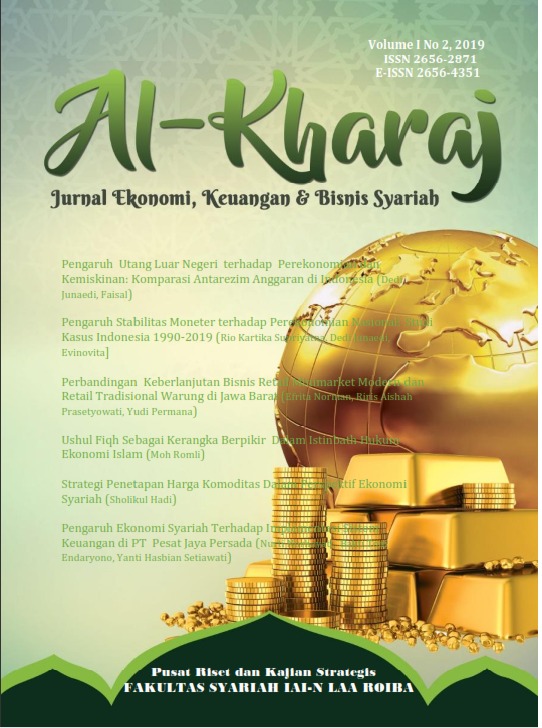Pengaruh Stabilitas Moneter terhadap Perekonomian Nasional: Studi Kasus Indonesia 1990-2019
Main Article Content
Abstract
Objectives of this research is to analyze: Does monetary stability affect Indonesia's GDP?; Does the difference in governance regimes affect the governance of monetary stability in supporting the achievement of Indonesia's GDP?; Does monetary stability affect Indonesia's per capita income (PCI)?; Does the difference in government regimes affect the management of monetary stability in supporting the achievement of Indonesia's per capita income (PCI)?. The research method uses descriptive-quantitative analysis with saturated sampling techniques and secondary data from Bank Indonesia, the National Development Planning Agency (Bappenas), the Central Statistics Agency (BPS), the World Bank, and other reference sources. The data is in the form of time series data from the period 1990-2019. The dependent
variable is the value of GDP and GDP per capita (ICP). While the independent variable: the exchange rate, the money supply, the inflation rate, direct investment, financing, the state budget, the amount of debt (US $), the number of exports, the number of imports, and the dummy variable period of the reform era government with the era of the New Order Government (Soeharto) as comparison or reference. The processed data were analyzed in quantitative descriptive with multiple regression models with dummy variables. The result is that some indicators of monetary stability (money supply, exchange rate, BI rate, investment, imports, and the state budget) have a significant effect on the economy (GDP). While inflation, financing and foreign debt did not significantly affect GDP achievement. The Reformation government regimes (BJ Habibie, Abdurrahman Wahid, Megawati Sukarnoputeri, Soesilo Bambang Yudhoyono, and Joko Widodo) are different and better than the New Order (Soeharto) government in managing stability towards achieving GDP. The econometrics model is GDP$ = 178,542 + 0.0999 * M1M2 -
0.0186 * EXCHANGE $ + 9.5872 * BI_RATE + 1.1935 * INVEST $ - 0.000225 * IMPORT + 0.181 * APBN + 182.488 * REZIM1 + 171.038 * REZIM2 + 199.86 * REZIM3 + REVIMIM3 + 214.599 * REZIM5. Some indicators of monetary stability (money supply, exchange rate, BI rate, investment, import and APBN) also have a significant effect on GDP per capita. While inflation, financing and foreign debt did not significantly affect the achievement of GDP per capita. The Reform era government regime (BJ Habibie, Abdurrahman Wahid, Megawati Sukarnoputeri, Soesilo Bambang Yudhoyono, and Joko Widodo) differed and more better than the New Order era administration (Soeharto) in governance stability. to the achievement of GDP per capita. The econometric model: PCIUS$ = 5.7594 + 0.0032 * M1M2 - 0.0006 * EXCHANGE$ + 0.3092 * BI_RATE + 0.0385 * INVEST$ -0.0000072 * IMPORT + 0.0058 * APBN + 5.8867 * REZIM1 + 5.5173 * REZIM2 + 6.4471 * REZIM3 + 6.ZZ * REZIM5.
JEL CLASSIFICATION: E52, E58, E63

